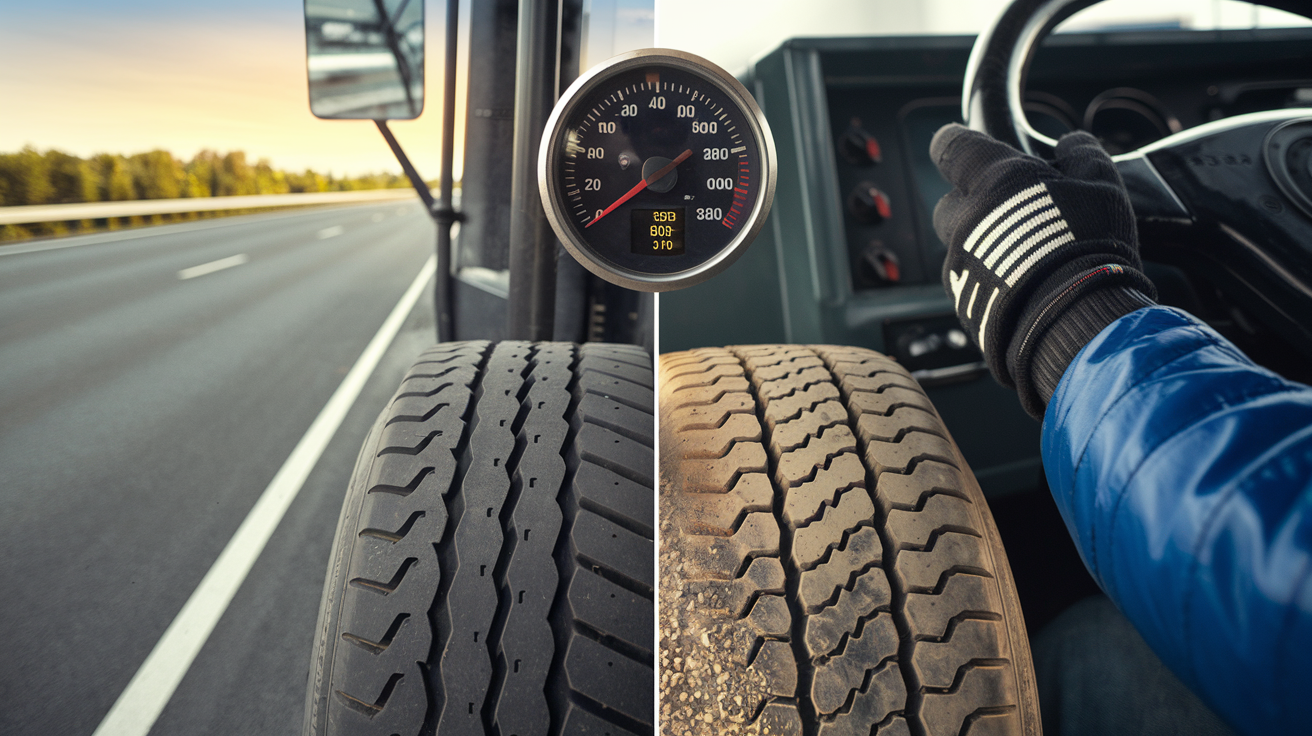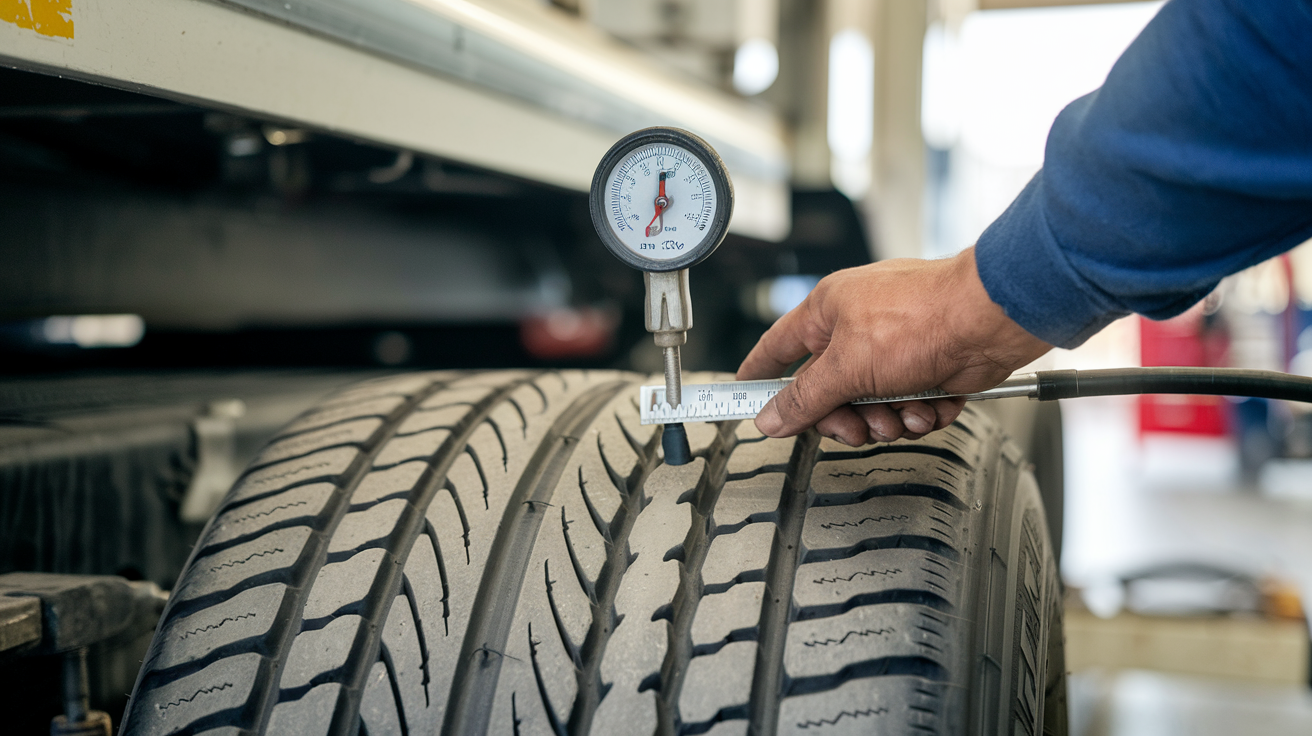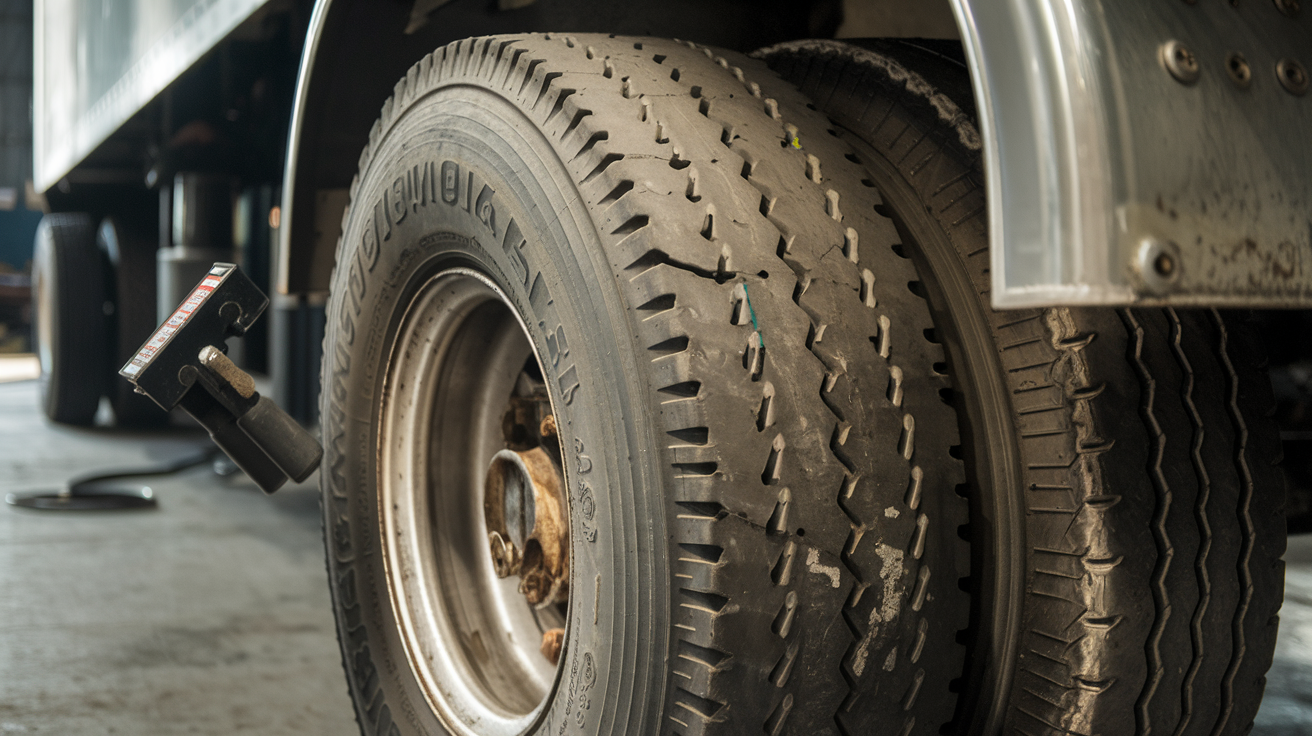how many miles does a semi truck tire last
how many miles does a semi truck tire last: Have you ever wondered how far those massive semi-truck tires can go before needing replacement? 🚛 It’s a question that’s not just crucial for truckers and fleet managers but also impacts road safety and transportation costs for everyone. The lifespan of a semi-truck tire is a fascinating blend of engineering, economics, and real-world conditions.
Imagine the wear and tear these tires endure: carrying loads weighing tens of thousands of pounds, traversing diverse terrains, and facing extreme weather conditions. Yet, they keep rolling, mile after mile. But for how long? And what determines their longevity? In this post, we’ll dive deep into the world of semi-truck tires, exploring everything from understanding their lifespan to maximizing their use. We’ll uncover the key factors that affect tire mileage, learn to spot signs of wear, and even break down the cost-benefit analysis of tire longevity. So, buckle up as we embark on this rubber-meets-the-road journey!
Understanding Semi Truck Tire Lifespan

Average mileage expectations
Semi truck tires typically last between 100,000 to 150,000 miles, depending on various factors. However, some high-quality tires can last up to 200,000 miles under optimal conditions. It’s important to note that these figures are averages, and actual mileage can vary significantly.
| Tire Type | Average Mileage |
|---|---|
| Standard | 100,000-150,000 |
| Premium | Up to 200,000 |
Factors influencing tire longevity
Several key factors affect how long a semi truck tire will last:
- Driving conditions
- Load weight
- Tire pressure maintenance
- Driving habits
- Road surface quality
- Climate and weather
Importance of proper tire maintenance
Regular maintenance is crucial for maximizing tire life and ensuring safety on the road. Proper tire care includes:
- Regular pressure checks
- Rotation and alignment
- Tread depth monitoring
- Balancing
By adhering to a strict maintenance schedule, truckers can significantly extend the life of their tires, potentially saving thousands of dollars in replacement costs over time. Additionally, well-maintained tires contribute to better fuel efficiency and overall vehicle performance.
Now that we’ve covered the basics of semi truck tire lifespan, let’s delve deeper into the specific factors that can affect tire mileage.
Key Factors Affecting Tire Mileage

A. Driving conditions and road types
Driving conditions and road types significantly impact semi truck tire longevity. Highway miles typically result in less wear compared to city driving or off-road conditions. Here’s a breakdown of how different road types affect tire mileage:
| Road Type | Impact on Tire Life |
|---|---|
| Highway | Longest lasting |
| City | Moderate wear |
| Off-road | Highest wear |
Factors influencing tire wear on various road types include:
- Surface texture
- Presence of debris
- Frequency of turns and stops
- Temperature variations
B. Load weight and distribution
Proper load management is crucial for maximizing tire life. Overloading or uneven weight distribution can lead to premature wear and reduced mileage. Consider these points:
- Adhere to manufacturer-specified load limits
- Ensure even weight distribution across axles
- Regularly check and adjust tire pressure based on load
C. Tire quality and construction
The quality and construction of semi truck tires play a vital role in their longevity. Key aspects include:
- Tread compound durability
- Casing strength
- Heat dissipation properties
Higher quality tires often provide better mileage, though they may have a higher initial cost.
D. Driver habits and behavior
Driver behavior significantly influences tire lifespan. Proper driving techniques can extend tire life, while poor habits can lead to premature wear. Important factors include:
- Maintaining appropriate speeds
- Avoiding sudden braking or acceleration
- Proper cornering techniques
- Regular tire maintenance and rotation
Now that we’ve explored the key factors affecting tire mileage, let’s look at strategies for maximizing semi truck tire life.
Maximizing Semi Truck Tire Life

Regular tire pressure checks
Maintaining proper tire pressure is crucial for maximizing semi truck tire life. Underinflated tires can lead to increased rolling resistance, uneven wear, and reduced fuel efficiency. Conversely, overinflated tires can result in decreased traction and a harsher ride. To ensure optimal performance and longevity:
- Check tire pressure weekly or before long hauls
- Use a calibrated pressure gauge for accurate readings
- Adjust pressure according to manufacturer specifications
- Consider ambient temperature when checking pressure
Proper wheel alignment
Correct wheel alignment is essential for even tire wear and extended lifespan. Misalignment can cause:
| Issue | Impact on Tire Life |
|---|---|
| Irregular wear | Reduced mileage |
| Increased rolling resistance | Lower fuel efficiency |
| Handling problems | Safety concerns |
Schedule regular alignment checks, especially after hitting potholes or curbs.
Rotation and balancing schedule
Implementing a consistent rotation and balancing schedule helps distribute wear evenly across all tires:
- Rotate tires every 50,000 to 75,000 miles
- Balance tires during each rotation
- Follow manufacturer-recommended rotation patterns
- Keep detailed records of rotations and balancing
Tread depth monitoring
Regular tread depth checks are vital for assessing tire condition and determining when replacement is necessary:
- Use a tread depth gauge for accurate measurements
- Replace tires when tread depth reaches 4/32″ for steering tires and 2/32″ for other positions
- Monitor for uneven wear patterns, which may indicate alignment or suspension issues
By implementing these practices, fleet managers can significantly extend the life of semi truck tires, ultimately reducing costs and improving overall vehicle performance.
Signs of Tire Wear and Replacement

Visual indicators of tire aging
Semi truck tires exhibit several visual cues that indicate aging and wear. Look for:
- Tread depth: Use a tread depth gauge to measure. Most states require a minimum of 4/32″ for steering tires and 2/32″ for other positions.
- Sidewall cracks: Small cracks in the sidewall indicate age-related deterioration.
- Uneven wear patterns: Can signal alignment or inflation issues.
- Bulges or blisters: These indicate internal damage and require immediate replacement.
| Wear Indicator | Action Required |
|---|---|
| Tread < 4/32″ (steering) | Replace tire |
| Tread < 2/32″ (other) | Replace tire |
| Visible sidewall cracks | Monitor closely, consider replacement |
| Uneven wear | Check alignment and inflation |
| Bulges or blisters | Replace immediately |
Performance changes signaling wear
As tires wear, drivers may notice:
- Reduced traction, especially in wet conditions
- Increased stopping distance
- Vibrations or pulling to one side while driving
- Decreased fuel efficiency
These changes not only affect performance but also safety, making it crucial to address them promptly.
Legal requirements for tire replacement
Federal and state regulations mandate specific standards for commercial truck tires:
- Minimum tread depth of 4/32″ for steering tires and 2/32″ for all other positions
- No exposed ply or belt material
- No separation of tread from casing
- No cuts or cracks that expose ply or belt material
Failing to meet these requirements can result in fines and increased liability risks. Regular inspections and timely replacements are essential for compliance and safety.
Cost-Benefit Analysis of Tire Longevity

Initial investment vs. long-term savings
When considering the cost-benefit analysis of semi truck tire longevity, it’s crucial to weigh the initial investment against potential long-term savings. High-quality tires may come with a higher upfront cost but often prove more economical in the long run. Let’s examine this relationship:
| Aspect | Low-Cost Tires | Premium Tires |
|---|---|---|
| Initial Cost | Lower | Higher |
| Average Lifespan | 100,000-150,000 miles | 200,000-300,000 miles |
| Replacement Frequency | More frequent | Less frequent |
| Total Cost Over Time | Higher | Lower |
Investing in premium tires can lead to significant savings over time due to:
- Reduced frequency of replacements
- Lower overall maintenance costs
- Decreased downtime for tire changes
Impact on fuel efficiency
Tire quality and condition directly affect a semi truck’s fuel efficiency. Well-maintained, high-quality tires can contribute to substantial fuel savings:
- Proper inflation: Maintains optimal rolling resistance
- Advanced tread designs: Reduce drag and improve aerodynamics
- Longer-lasting compounds: Maintain efficiency over extended periods
A 1% improvement in fuel efficiency can translate to thousands of dollars saved annually for long-haul trucking operations.
Balancing safety and economy
While cost considerations are important, safety should never be compromised. The right balance between economy and safety involves:
- Regular tire inspections
- Timely rotations and alignments
- Proper inflation maintenance
- Replacing tires before they reach critical wear levels
By prioritizing these practices, trucking companies can maximize both safety and economic benefits. Remember, the cost of potential accidents or downtime due to tire failure far outweighs the savings from extending tire life beyond safe limits.
Ultimately, a strategic approach to tire management, focusing on quality and maintenance, yields the best long-term results in terms of both safety and cost-effectiveness.

Semi truck tire longevity is a crucial aspect of fleet management and road safety. While the average lifespan of a semi truck tire ranges from 100,000 to 150,000 miles, various factors can significantly impact this figure. Proper maintenance, driving habits, road conditions, and load weight all play pivotal roles in determining how long a tire will last.
To maximize tire life and optimize your fleet’s efficiency, implement regular tire inspections, maintain proper inflation, and practice good driving habits. By doing so, you can not only extend the life of your tires but also improve fuel efficiency and reduce overall operating costs. Remember, investing in quality tires and proper maintenance practices is a smart business decision that pays off in the long run through enhanced safety, performance, and cost-effectiveness.
Interested in bulk purchases for truck tires? Contact us today, and we’ll connect you with a trusted wholesale supplier based in Thailand, offering competitive pricing and reliable supply for large orders.







